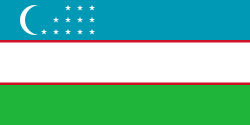Aral Sea Transforms into Desert, Affecting Millions Due to Environmental Crisis
 Uzbekistan
UzbekistanThe Aral Sea, once the fourth largest lake in the world, has nearly evaporated due to extensive irrigation practices initiated in the 1960s, turning it into the Aralkum desert and affecting over three million people across Uzbekistan and Kazakhstan. According to reports, the lake has shrunk from 68,000 square kilometers (26,300 square miles) to a mere 8,000 square kilometers (3,100 square miles) by 2015, exacerbating regional environmental crises.
Ibrahim Thiaw, Executive Secretary of the United Nations Convention to Combat Desertification, described this transformation as one of the most significant environmental disasters globally. Studies indicate that the loss of the Aral Sea has nearly doubled local atmospheric dust, rising from 14 million to 27 million metric tons between 1984 and 2015, leading to severe air quality deterioration and accelerating glacial melt. Salinity levels in the remaining water have increased dramatically, decimating marine life and disrupting livelihoods. Local governments are attempting to mitigate the damage by vegetating the former lakebed, with international aid being sought for further efforts, emphasizing the global implications of such environmental neglect.
 Uzbekistan
Uzbekistan Uzbekistan
Uzbekistan Uzbekistan
Uzbekistan